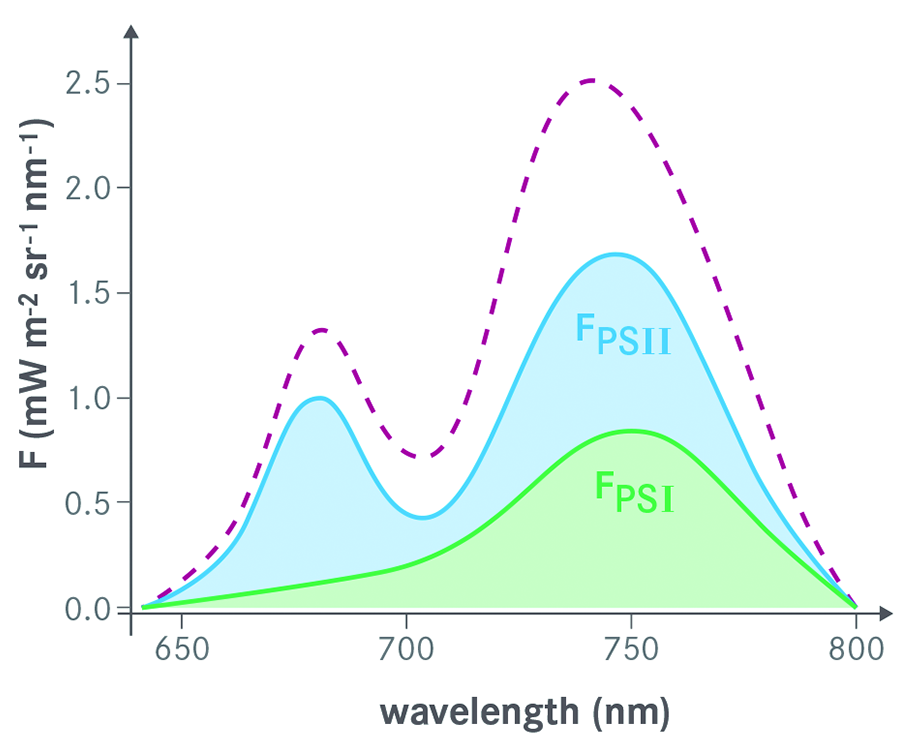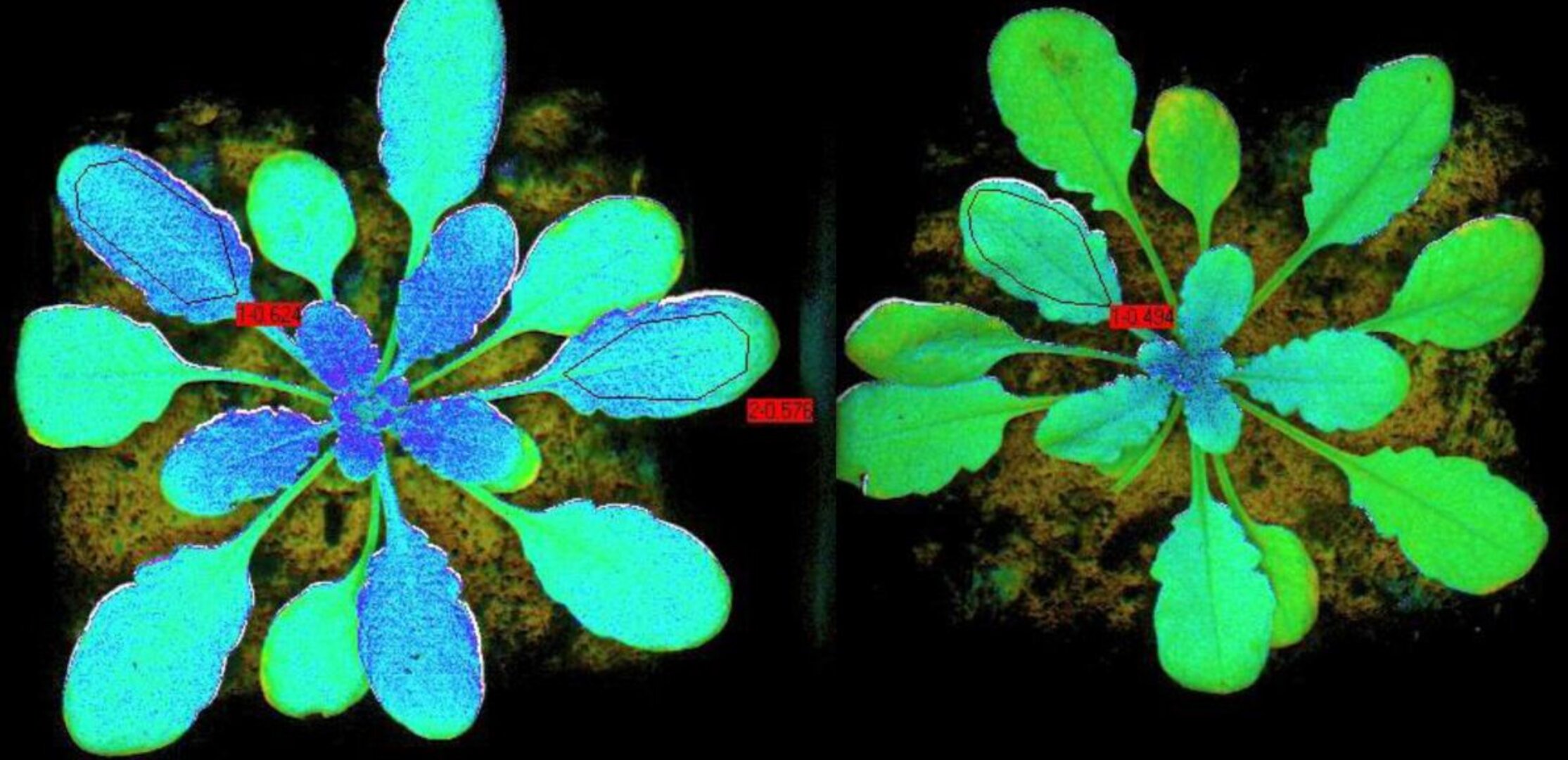Fluorescence
When plants absorb light, not all of the energy absorbed can be used to trigger the reactions of photosynthesis. In optimal conditions, plants use about 82% of the absorbed light to support photosynthetic processes, with the remainder lost as heat and/or emitted as fluorescence. The measurement of fluorescence can, therefore, be a useful reporter for photosynthetic efficiency.
The emission of chlorophyll fluorescence emanates from two photosystems involved in the light reaction: PS II and PS I. Chlorophyll fluorescence produced from the initial reactions in PS II occurs at wavelengths between 650–780 nm with a peak at around 685 nm. In the case of PS I, fluorescence occurs almost exclusively in the far-red/near-infrared spectrum (>700 nm, with a peak at about 740 nm).

The full chlorophyll emission spectrum covers a wavelength range in the visible to near-infrared spectrum of 640–800 nm. Both photosystems operate in a reaction chain and are commonly measured as a two-peak signal.
Stress factors such as frost or drought affect these processes. PSII responses are particularly dynamic, as most regulatory mechanisms are operational there. Changes in the functional status of PS II are directly and mechanistically reflected in changes of the fluorescence emission signature. When plants grow in optimal conditions, the height of the two fluorescence peaks provides an excellent proxy for actual photosynthetic light conversion.
Plants have optimum ranges for photosynthesis within the resource milieu of light, moisture and temperature, the specifics depend on the type of vegetation.
With sufficient resources and little to no stress, photosynthesis can proceed at or near maximum rates. Under stress, however, adjustments in photobiology, photosynthesis and excess energy dissipation will transition through stages reflecting the increasing effects of strain. Since frost and drought are significant stress factors in many crops, an associated decline in photosynthesis and increased protective measures, such as reduced light absorption and increased dissipation of absorbed light energy via alternative routes, can occur, which tend to decrease the emission of fluorescence emission.

On the other hand, with sustained or extreme stress, such as exposure to herbicides, coping mechanisms can be exhausted quickly in non-hardy plants and damage to the photosynthetic molecular apparatus can produce a strong increase in fluorescence.
It is essential to have advanced methodologies that will allow both the accurate discrimination of fluorescence changes and the the interpretation of those responses.
The FLEX mission will provide global maps of vegetation fluorescence, which can be converted into an indicator of photosynthetic activity. This information will be used to improve our understanding of how carbon moves between plants and the atmosphere and how photosynthesis affects the carbon and water cycles. The mission will also give us better insight into plant health, which is especially important given the increasing demands on the production of food and animal feed by Earth's growing population.
Back to FLEX homepage |






